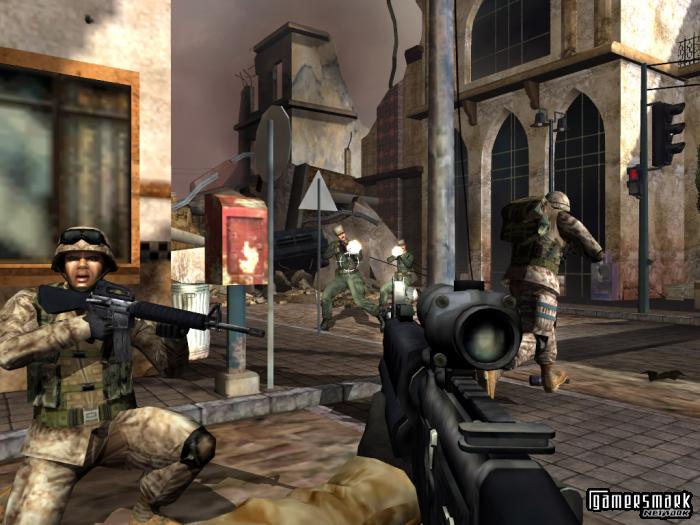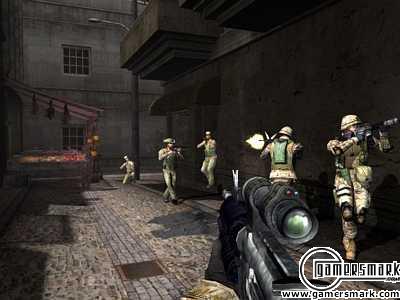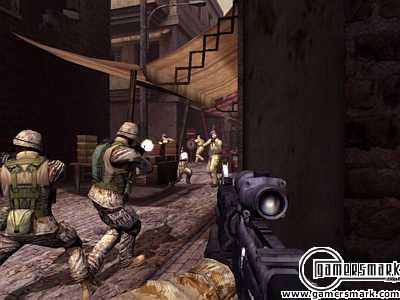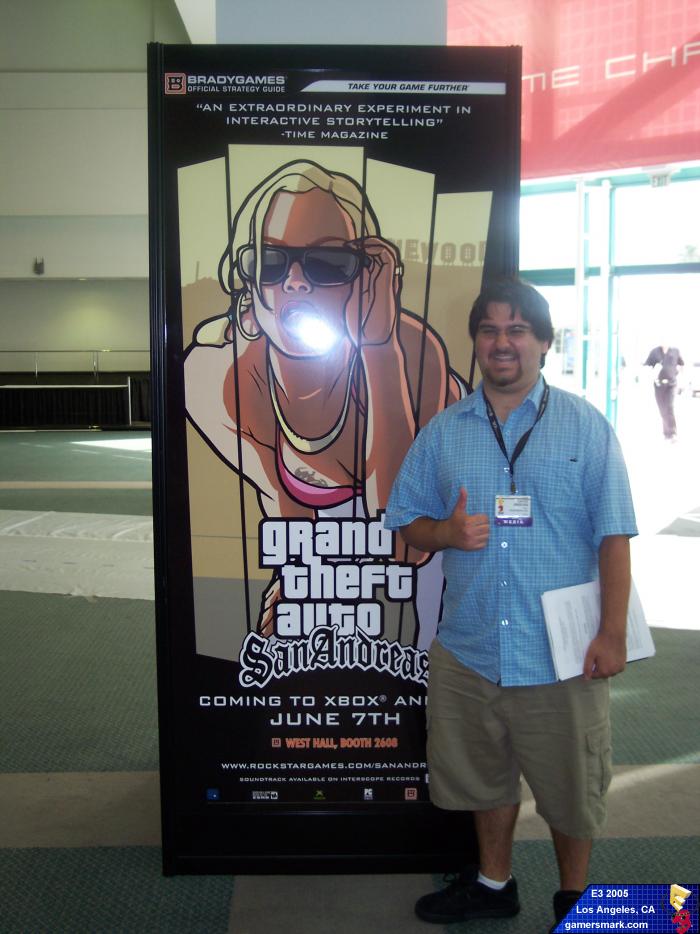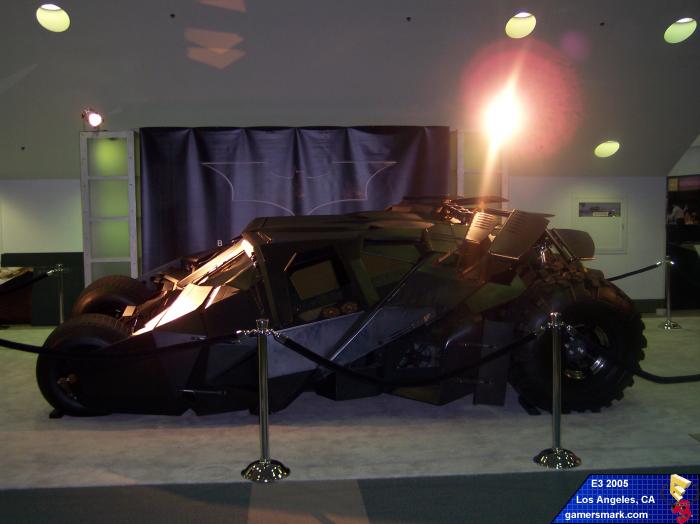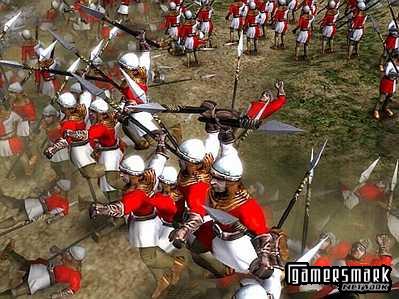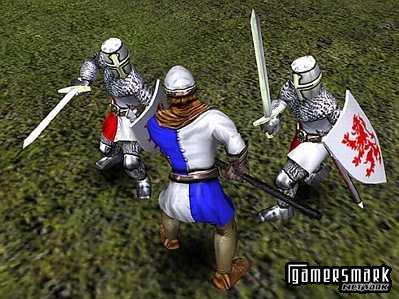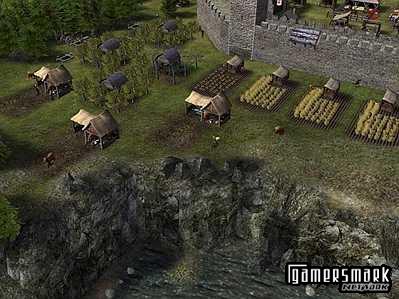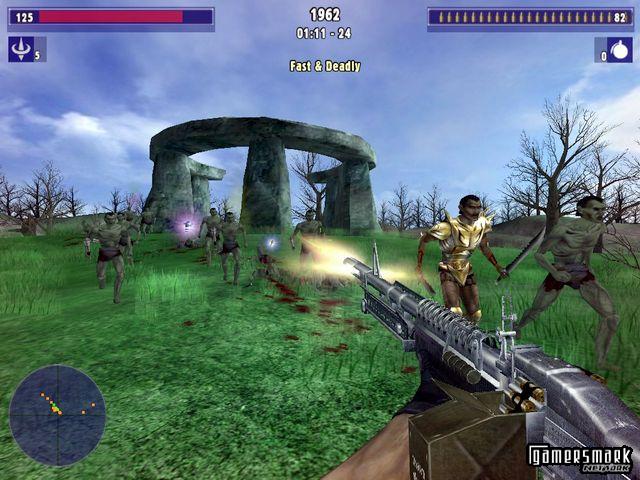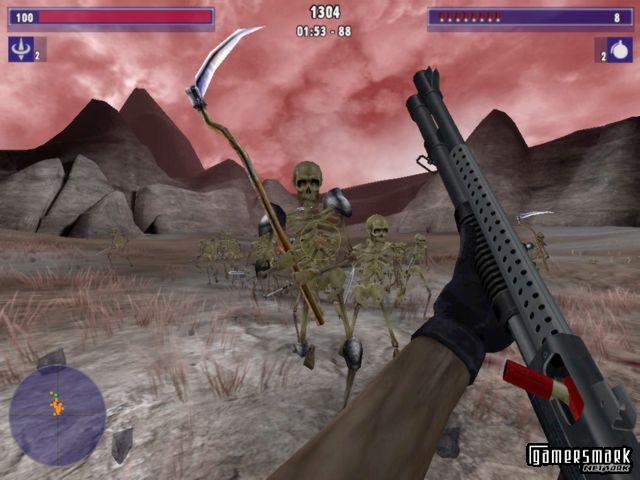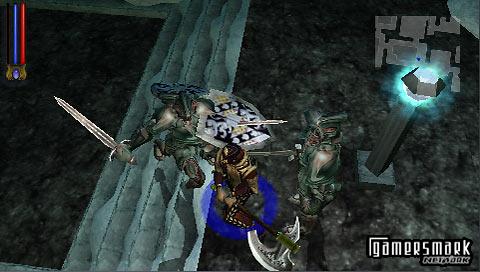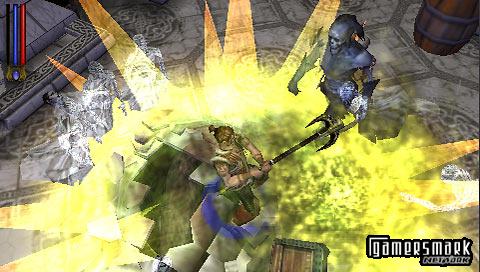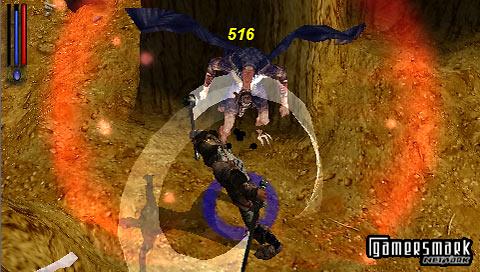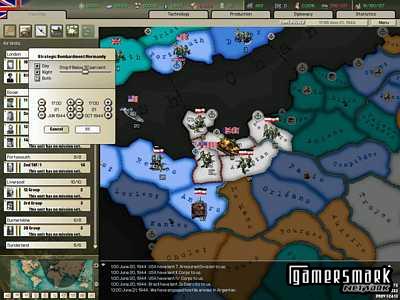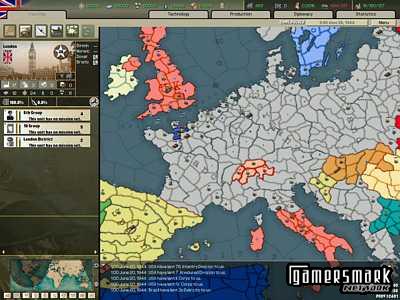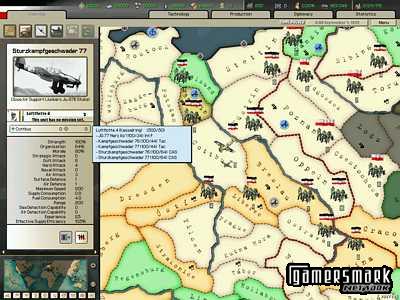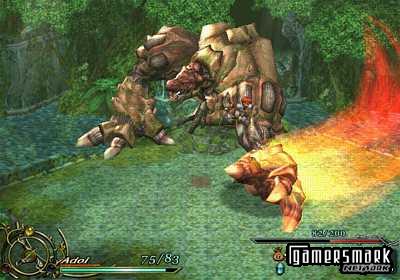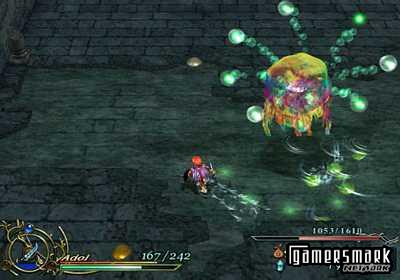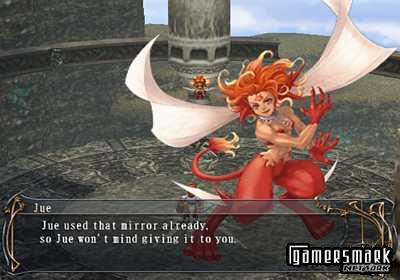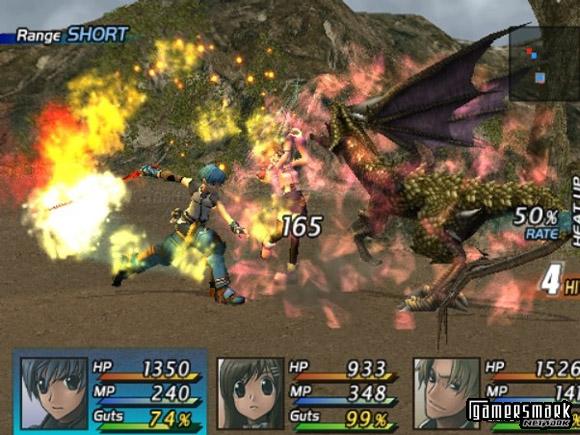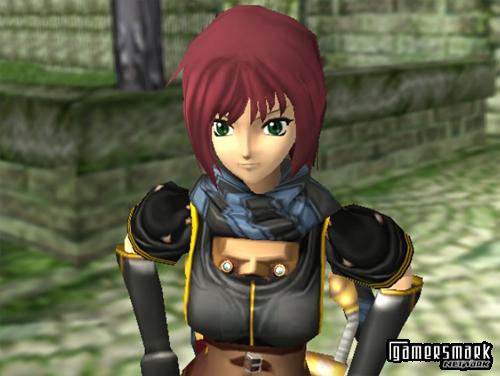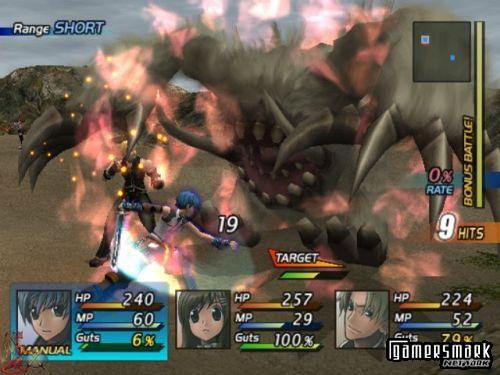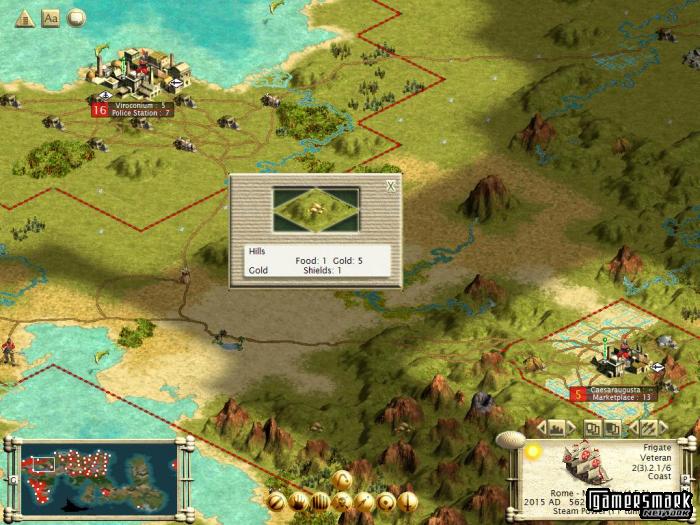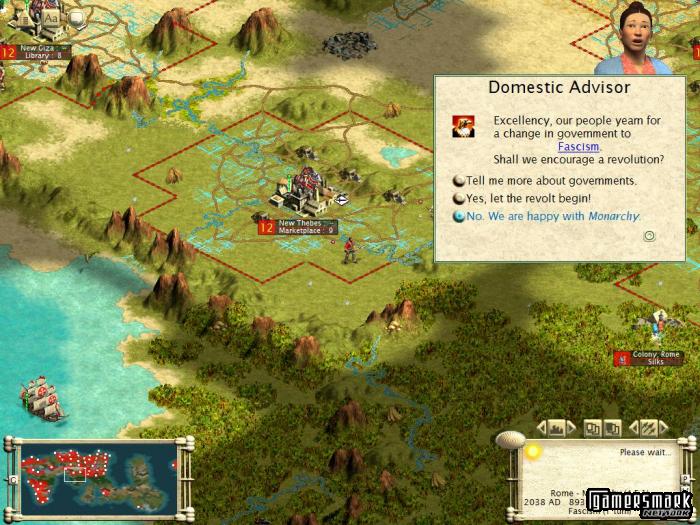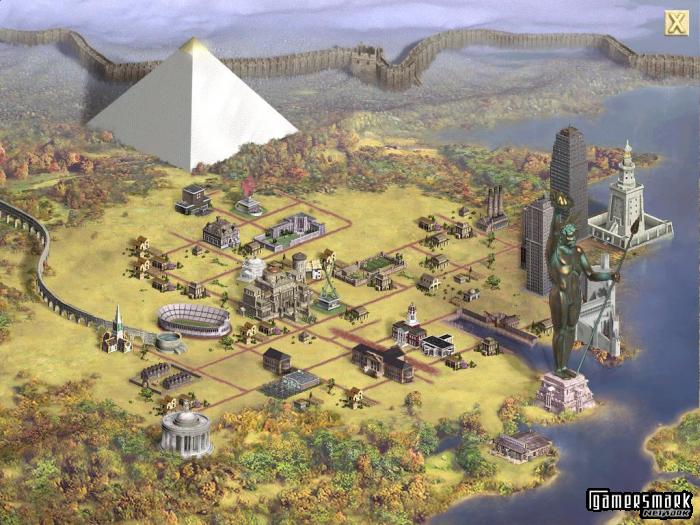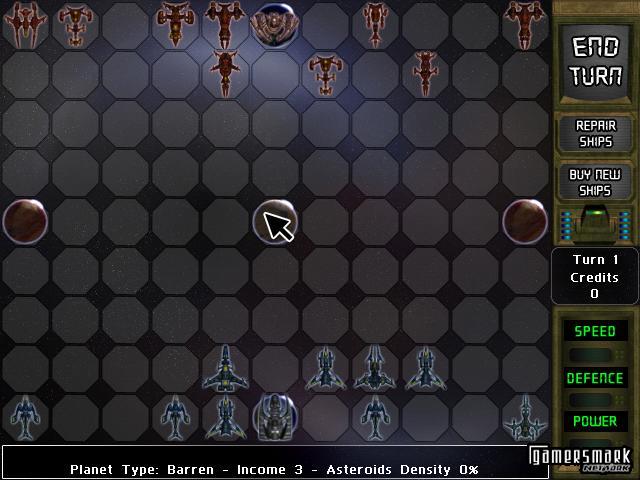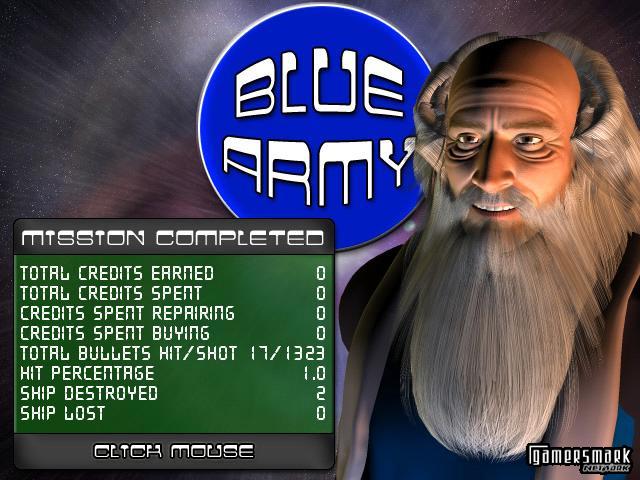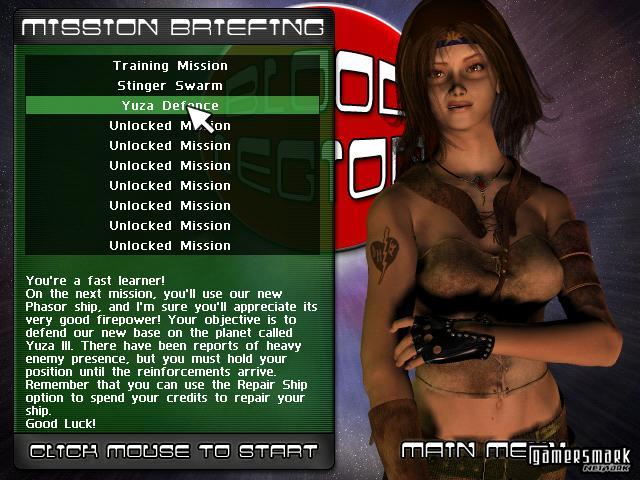When I went on the second day of E3, I had the pleasure of seeing the event how it should be: with all the lights on. Needless to say, everything looked brighter. I don’t know if it was the affect of brightness that made it more apparent that AJ was wearing a trench coat that was particularly eye-catching (to say the least, since like 50 people came up to ask him where he got it and stuff), but that wasn’t the only highlight of the day. No siree.
We left a little later than I would have liked. I’d say we’d actually gotten on the road at around 8:00 or so, because we had to wait in the drive-thru for Jack-In-the-Box. But that wasn’t even the part that took the longest. From Point A to Point B, we were in traffic that was crawling at about Five MPH. We didn’t even get to the LA Convention Center until about 9:15 or so, and I didn’t hit the speed limit once.
When we got into the actual building, I called Dan to tell him we were there. He said they were in the press room along the far wall. It should be noted that every time I talk to someone on the phone, I have to ask them to repeat what they said about five hundred times before I can understand them since it’s so loud, and I have a thing about not holding my cell phone the right way. After a little confusion (it took us longer than I’d like to mention) about actually where this mystical “press room” was, it turned out that it was the same place we got our badge holders in. Silly me. Another funny part of it is that each time AJ had gone down the hall that we were supposed to, I told him to go down another hall with me. So he went down the right hall twice before we actually went the right way together.
We met up with Dan and Marcus who were doing stuff on the web site at the time. Since I forgot that we were supposed to make business cards of some type, Dan gave us a handful of his to use between us, so that we could just write our stuff on the back of it and give it out. We left the area afterwards, and went to the floor, looking at the games we’d already seen the day before, and stepping in to play a few of them. This encompassed most of our day, and except for a small period of time between 10:40 a.m. and around 12:15 p.m.
The games I had played today, and forgotten to mention about yesterday are as follows:
StarCraft: Ghost – I hadn’t actually played the game, but I did see it played in what could be described as a Capture the Flag mode. The game was ridiculously awesome, especially since I’m a long-time StarCraft player (not exactly a veteran, but I do love the game) of about seven years, so it was really cool seeing how all the vehicles and Terran units were modified and changed after ten years since the first game came out. I had always wondered why they hadn’t done anything more with the StarCraft franchise, but the empty space in my heart has been filled with just watching other people play StarCraft: Ghost. From the looks of it, it seemed like it was better, and more unique than Halo. Since its set in the StarCraft universe, people could chose to be a Ghost, Firebat, or Marine, and drive Siege Tanks, Vultures (which seem like they handle exactly like a Ghost in Halo), and other original vehicles made for the game. The mode that was currently being played in multiplayer was a very interesting version of Capture the Flag. Instead of retrieving a flag and taking it back to your base, the object of the game was to infiltrate a factory, lift it off, and land it in your base for a certain amount of time. It looked really fun, because players of the other team were constantly raiding the factory, taking it over, and launching it off the ground back towards their base. I predict StarCraft: Ghost will put the Halo name to shame, even though I loved the original Halo.
Battlefield 2: Modern Combat – This game is another from the development team DICE and publisher EA, who have worked together in the past with Battlefield 1942 and Battlefield Vietnam. Battlefield 2 is a modern combat game, using all of today’s weaponry, and the added surprise (to me at least) of artillery fire. While the featured demo was multiplayer and featured only one map, once you got used to the PS2 controller, the game became really fun. All the soldier classes (considering the types that are usually included in a Battlefield game) were available to choose from, so it provided a wide variety in the troops. I played for about an hour or so. You can read my preview of the game here:
http://www.gamersmark.com/previews/view/253
Burnout Revenge – I only played the original Burnout for all of about half an hour on the Xbox at my friend’s house, and was really not that into the game. Three games later, (and while I haven’t played it, I hear Burnout 3 is really good) Burnout Revenge has really impressed me. What could only be described as high adrenaline racing, you drive into your competitors, trying to crash them into walls, and it’s helpful to just be as reckless as you can while still trying to win 1st place. The crash scenes and the explosions are really amazing because of the angles and slow motion they use to efficiently deliver all the action that is happening. There were two courses available for play in a single player mode for the E3 demo that was on display. I’m definitely looking forward to the final product.
Kingdom Hearts II – Kingdom Hearts II builds on top of what made Kingdom Hearts so great, and added some level of complexity. This is definitely a welcome change for those who bought the first game, but I’m not sure how it be for little kids who played it. Complexity issues aside, Kingdom Hearts II is an all new adventure, bound to be full of the characters that were in the original, as well as different Disney movies like, Mulan as well as others, which will provide the setting. Hades (from Hercules) takes a big part in the game from the looks of it. There’s a boss battle where you fight the Cerberus with Auron from FFX, which allows for some really cool cooperative attacks. In the first Kingdom Hearts, the FF characters didn’t accompany you on your journey, but the demo obviously seems to suggest otherwise for the sequel. The battle system is just as fluid as ever, and with the inclusion of a concept of “forms” Sora can change his fighting style (the one included in the game allowed Sora to have double Keyblades) which makes for some pretty exciting innovations. One thing is for certain though, if Kingdom Hearts II includes the Gummi Ship minigame thing they had in Kingdom Hearts, then I’ll probably just scream, because I never understood how to do anything with that freaking ridiculous concept.
Now its time for the SNK predicament. This is a very special part of my E3 journal, because if I hadn’t played Kingdom Hearts II ,
Battlefield 2, and Burnout Revenge afterwards, I would have been pissed off.
10:30 – I realize its 10:30, and stop playing Kingdom Hearts II. AJ and I have an appointment with SNK Playmore, which is in the hall that we weren’t in. So we had to go — quick style.
10:40 – We arrived at the SNK Playmore booth. I went up to the Press Desk to check in, and told them who I was and that I was with GamersMark.com. The lady looked at the list she had, and “gamersmark.com” was listed on it. She asked me for a business card, which I gave to her with information I had written on the back of it. She asked me who I was supposed to meet, but I didn’t know any name because we weren’t given one. She said to hold on, went into the backroom, and disappeared forever. That’s right, I never saw her again. Maybe she was really hungry and decided the business card would be a delectable treat. So, under the impression that we had to “hold on,” AJ and I looked at the old Neo Geo stuff they had in a case. Then we sat down, still waiting. AJ took out something and started reading, sitting on the floor. I looked around and saw that someone was done playing Metal Slug 5. I took it upon myself to play Metal Slug 5, since all the other games they had were relatively uninteresting old games they were porting to the current generation of systems which would all eventually have Live-enabled multiplayer. Whoopidoo.
10:59 – I notice it’s nearly 11:00, and figure that they should be coming out to greet us soon. So I continue playing Metal Slug 5.
11:04 – I look at my cell phone again, and notice its 11:04. So I thought “Ok, maybe they forgot.” So I went to the Press Desk again and did the whole process again that I had with the first woman that was there, since the person there now was completely different. She asked me for a business card, and then went to the backroom. We waited for about a minute, and she came back out and waved us in. So I called to AJ and then we went in. The lady then said “he’ll be right out.” So we took a seat on the couches. At this point it was about 11:06.
Interlude: 11:06 – 11:40 – During this time, amid weird looks by other members of the “press” at AJ’s trench coat, AJ and I read all the magazines and stuff we got for free. I drank a can of Sprite. I got up and got a small turkey sandwich with a thin piece of lettuce in it. While I was getting the sandwich, the guy I had seen walking around every which way through the room complained to me about how they had no mustard for the sandwiches, because they had it yesterday. I just said “Oh, that sucks.” It was then I thought that it would be funny if that was the guy we had to meet for our meeting. At this point we had waited about fifteen minutes already. So I went back to my seat, and ate the sandwich. This random guy comes from somewhere, with a sandwich and takes a drink from the bowl on the table. He asked AJ where he got his trench coat, and after AJ said the same thing he said to everyone else, the random guy asked us who we worked for. We said “Gamersmark.com” and the random guy said “Oh, really. I think I heard of you. Kind of ’up and coming.’ I hear you guys are pretty cool.” Yeah, right. I doubt he’s ever heard of us. That was the most general statement for any web site. That’s why we ignored him after, and acted like we had no interest in him. After a while later, I finished my sandwich, and then the random guy picked up his stuff and left. Afterwards, we waited for like another ten minutes before I got frustrated.
11:40 – I just about had it at this point, because we checked in 20 minutes early, only to be ignored. So I went back outside to the Press Desk to see what was up. There was another different person there (so that counts as three different women I saw at the desk). She was talking to someone else, so I stood by waiting for her to stop talking. While she was talking to him, she looked right at me, so I had assumed that she would talk to me after. Turns out, that wasn’t the case. Another dude comes out of nowhere and asks her a question, and they talk for about a minute, so I stepped in closer to where she was so that she would pay attention to me.
11:45 – I told the 3rd lady that we had been waiting inside the backroom for about 40 minutes and hadn’t met anyone yet. She said she’d see what was up, so I followed her back there, and then sat back down next to AJ. She went into a room and told someone that we had been waiting for about an hour. So, whoever she was talking to was supposedly in a meeting still. So when the guy in the meeting left, the guy who I could only think is the Manager/Director of the booth for SNK came out and apologized for the long wait. He asked who we were supposed to meet, and I said we didn’t know, we just know we had an appointment with SNK at 11:00 a.m. The Manager apologized again and asked if we had taken any food or drinks. I said we did, and he said that was good. He said “You’re supposed to meet my pr representative, let me go get him.” So after he went chasing after him for about another five minutes, he brought back the mustard guy.
11:50 – “Ohhhh, so YOU’RE Gamersmark!” is what the mustard guy said. No shit, Sherlock. We’d only been sitting in that room for the last half an hour watching him walking around the whole time because we weren’t there for any particular reason. But then I guess I couldn’t expect him to actually look for two guys that work for Gamersmark.com that he was supposed to meet at 11:00. So, we finally got our meeting underway, except we had to do it together with another guy. Wanna guess who it was? The Senior Editor of Play Magazine. Great, not only do we get ignored for an hour, we get overshadowed by a more prominent figure in the video game media than us lowly Gamersmark.com staffers.
12:00 or so – The mustard guy told us about which of SNK’s games that they were porting from their Neo-Geo to release on Xbox/Xbox 360. The mustard guy said that SNK loved Xbox because the fanbase likes 2D games more than that of the PS2’s. Supposedly all their 2D game sell horribly on the PS2, and all their games being released are for Xbox, save for the Metal Slug 4/5 combo pack that’s coming out later this year. Depending on the success of that, they may or may not become exclusive to Xbox. He also said that they were making a Metal Slug game in 3D. During the whole time, the senior editor dude kept pressing for special treatment of playing the games that weren’t available out on the floor. So between my nods, and saying “yeah” to transfer the message that I was listening to what he was saying about release dates for games, I had to listen to the annoying senior editor guy asking about being able to play games that no one else could. The mustard guy said that they’d have something after the show just for them. So, lucky him. That was basically all that happened. I didn’t go away from the meeting I had with SNK with the same feeling I had gotten from Namco. Maybe it was because we were ignored for so long, or maybe because Namco actually made us feel like they wanted us to find out about their games and had people actually working on the game explain them to us. We got press kits from the mustard guy then left. On the way out, the Manager acknowledged us when we left, and we said thanks to him. The Manager was a nice guy, in hindsight.
So, thanks to all that, there’s a lot more on today’s journal than originally planned. Be happy. The rest of the day we just walked around, and played some more games. We left when we got tired. On a side note, I don’t hate SNK.

